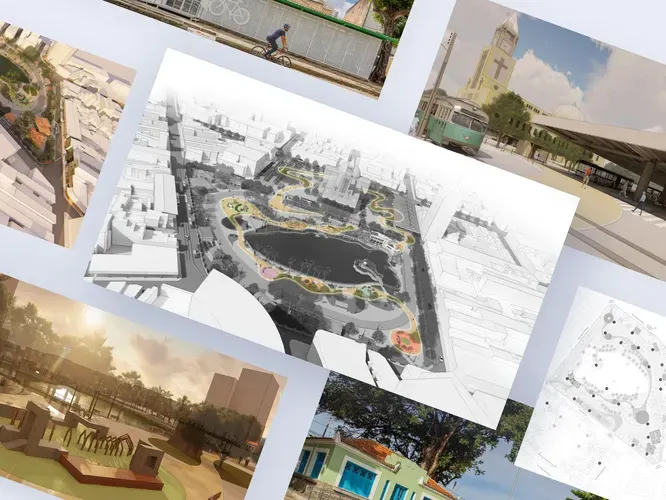Table of Contents
Overview
Parque das Crianças, also known as Parque da Liberdade, is a historical public space in the heart of Fortaleza, Ceará. The project requalified this heritage site through a contemporary urban lens, focusing on childhood memory, public education, and inclusive play. Developed after winning a city-run design competition, the intervention revitalizes a 26,877 m² area with sensory pathways, pedagogical playgrounds, and heritage preservation.
👨💻 Role
Co-author Architect and Archviz Specialist — responsible for designing playgrounds and leading rendering efforts for the visual presentation of the project.
❓ Problem
- The site, despite its historical value, had degraded over time and lacked public engagement.
- Needed a solution that honored its heritage while introducing contemporary urban uses.
🎯 Goal
- Requalify a listed heritage space into a vibrant, inclusive urban park.
- Foster childhood interaction and learning through playful, sensorial, and accessible design.
- Reinforce historical memory while ensuring the park’s urban vitality.
✨ Solution
Concept and Methodology
- Applied the Theory of Multiple Intelligences (Howard Gardner) as spatial programming logic.
- Designed seven pedagogical “islands” with cognitive and sensory activities for children.
- Encouraged interaction via a constructivist approach based on Piaget’s learning theory.
Heritage and Sensory Design
- Restored and reimagined historical elements using techniques like anastylosis.
- Integrated open-air heritage education via visual storytelling and interactive symbols.
- Developed organic floor patterns and permeable paving to reinforce exploratory movement.
Landscape and Uses
- Mixed contemplative green areas with active zones to attract diverse user profiles.
- Reprogrammed historical buildings for uses such as cafés, administration, bike support, and more.
⚙️ Challenges and Learnings
- Requalifying a sensitive, historic urban area required both technical precision and narrative coherence.
- Balancing visual and sensory stimuli with heritage preservation standards.
- Collaboration with educators, historians, and accessibility consultants enriched the design process.
✨ Final Thoughts
- Parque das Crianças is a case study in blending urbanism, education, and heritage.
- The project’s success is reflected in its first-place award, its built status, and its continued use by the public.
- A proud milestone in participatory and context-sensitive urban design.

.BO64Ck1j.webp)
.B6WvtQNd.webp)
.BoH3-BLV.webp)
.C3WMk1Wm.webp)
.BWT9TVkD.webp)
.BeSI8nPw.webp)
.D_bkXr1B.webp)
.DwUG5B3v.webp)
.qqsX3zQF.webp)